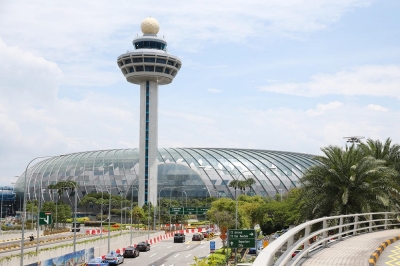SINGAPORE, Sept 7 — Singapore Prime Minister Lawrence Wong has announced that construction of Changi Airport Terminal 5 (T5) will commence in the first half of 2025.
According to the Straits Times, the project aims to elevate Singapore’s connectivity, projecting links to over 200 cities by the mid-2030s, up from nearly 150 currently.
Addressing attendees at the 40th anniversary dinner of the Civil Aviation Authority of Singapore (CAAS) yesterday, Wong highlighted the need for Singapore to maintain its competitive edge amid increasing regional competition.
“Some have announced plans for mega airports that can handle more than 100 million passengers a year. So they are narrowing the gap with Singapore,” he was quoted as saying.
He emphasised the rapid expansion of airline fleets and networks, which threatens to bypass Changi Airport for direct routes.
“Increasingly, flights that would have passed through Changi may no longer be needed,” he warned.
Wong also stressed the importance of innovation and adaptation, saying, “We cannot rest on our laurels.”
The same Straits Times report said that T5 is set to handle an additional 50 million passengers annually, complementing Changi Airport’s existing capacity of 90 million.
The Singapore government is also collaborating with international partners to liberalise air services agreements, allowing for increased flights between Singapore and other countries.
Wong also outlined several strategies for Singapore to stay ahead.
He highlighted advancements in airspace management, such as reducing flight times and fuel consumption, and trials of autonomous baggage-handling vehicles at Changi Airport.
The newly established International Aviation Lab aims to develop more efficient aircraft, passenger, and baggage handling methods.
“This is the first time that an aviation authority, airport operator, airline, and aircraft manufacturers are all coming together,” he was quoted as saying.
With global air passenger volume expected to double by 2040, Wong underscored the need for sustainable growth in Singapore’s aviation sector.
He praised the Sustainable Air Hub Blueprint, launched by CAAS in February, for addressing aviation emissions, though he acknowledged the challenges ahead.
“We know it is not going to be easy, but we have to give it our best shot,” he stated.
Wong also pointed out Singapore’s active role on the international stage, citing the S$120 million (RM399 million) upgrade to the Singapore Aviation Academy, which has trained over 160,000 aviation professionals from more than 200 countries.
“We are doing this because we want to pay it forward,” he said, reflecting on how Singapore once benefited from similar training.
Looking ahead, Wong said he believes that the success of Singapore’s aviation plans will benefit all Singaporeans and announced a public exhibition in 2025 to showcase the future of the Republic’s aviation industry.
“We welcome all Singaporeans to get involved and participate in shaping our Singapore aviation story,” he concluded.

